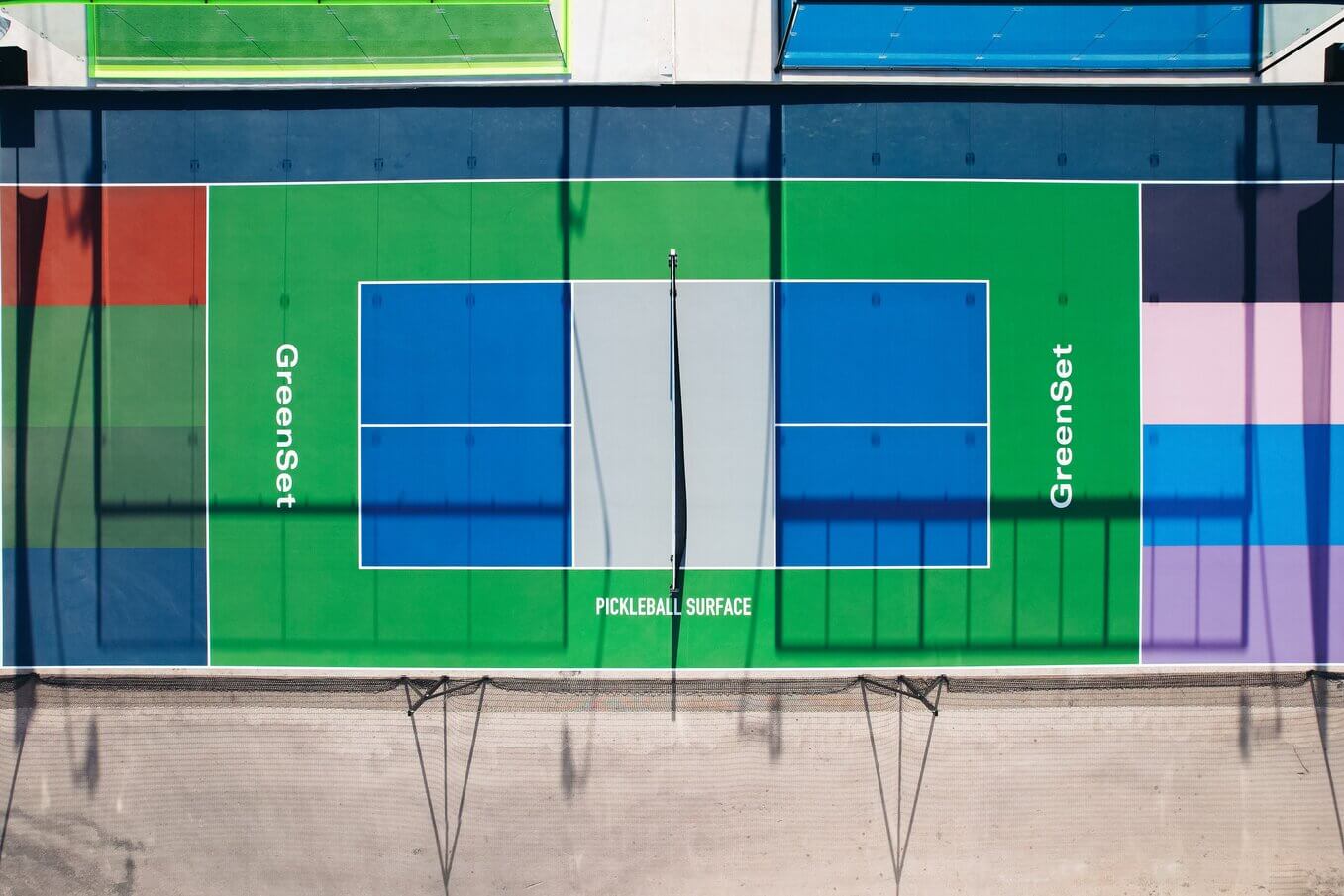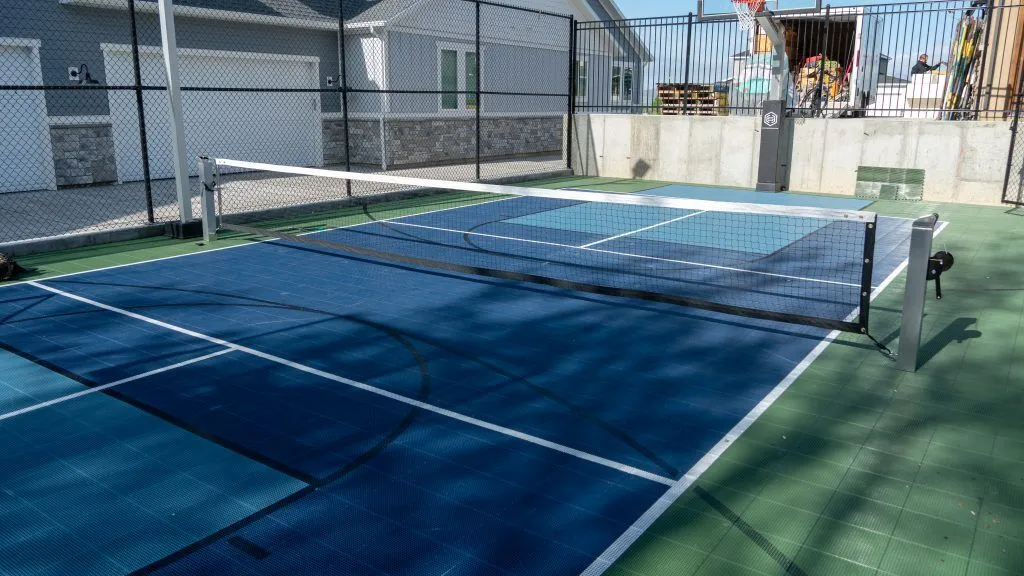Sustainable Practices in Pickleball Court Building You Ought To Know
As the popularity of pickleball continues to rise, so also does the requirement for sustainable methods in court building. The effect of these practices expands much beyond the court itself.
Picking Eco-Friendly Products
Selecting environmentally friendly materials is an essential step in the construction of sustainable pickleball courts. The selection of sustainable materials not just lessens ecological impact however also improves the durability and efficiency of the court. Trick materials consist of recycled rubber for the surface, which provides outstanding toughness and shock absorption while drawing away waste from landfills.
In addition, making use of locally sourced products decreases transport emissions and sustains regional economic situations. Pickleball court construction. For instance, utilizing indigenous woods for fencing and seating can give a sustainable visual while guaranteeing durability against the elements.
Including absorptive materials for court structures can further add to sustainability by permitting natural water drainage and minimizing drainage. These options not just safeguard neighborhood environments but also promote much healthier play environments.
Efficient Drain Solutions
While the option of environmentally friendly materials is necessary, implementing reliable drain options is equally vital for keeping sustainable pickleball courts. Appropriate water drainage not only protects the court surface area from water damages however also minimizes disintegration and overflow, promoting ecological integrity.
Efficient drainage systems can consist of absorptive paving, which allows water to infiltrate the ground instead than merging on the surface area. This lowers the probability of standing water, which can cause mold and mildew and other upkeep issues. Additionally, integrating strategically positioned water drainage networks and swales can guide excess water far from the court location, guaranteeing a dry having fun surface area and avoiding dirt erosion.
Making use of indigenous greenery in the landscape design around the courts can further improve drainage by absorbing excess water and lowering runoff. These plants need less watering and advertise biodiversity, aligning with lasting practices.
Additionally, it is important to consistently keep the water drainage system to guarantee its long-lasting performance. This includes clearing particles and monitoring for clogs. By prioritizing reliable water drainage options, pickleball court producers can considerably add to the sustainability and longevity of the center, eventually profiting both gamers and the setting.
Energy-Efficient Illumination Options
As the demand for pickleball continues to expand, incorporating energy-efficient lights choices into court style has ended up being significantly essential for sustainability. Conventional lighting systems frequently take in excessive power, adding to greater functional prices and environmental influence. Embracing contemporary, energy-efficient technologies is essential for both new building and constructions and renovations.
LED (Light Emitting Diode) illumination stands apart as a premier option because of its durability and energy financial savings (Pickleball court construction). Compared to conventional illumination, LEDs make use of approximately 75% much less power Learn More Here and can last approximately 25 times much longer, significantly lowering maintenance prices. Additionally, the directional nature of LED lights reduces light pollution, ensuring that illumination is concentrated on the court as opposed to surrounding locations.

Lasting Surface Area Alternatives
Exploring lasting surface alternatives for pickleball courts has acquired grip amongst players and contractors alike. The emphasis on eco-friendly products not just lines up with the expanding environmental recognition yet also enhances the efficiency and durability of the courts.
One prominent alternative is the use of recycled rubber, which can be sourced from made use of tires. This product offers exceptional shock absorption, decreasing the risk of injuries for players while advertising sustainability. Furthermore, modular tiles made from recycled plastics provide an important source additional practical choice. These floor tiles are easy to set up and change, and their versatility allows for various court arrangements.
Natural yard courts are also arising as a sustainable choice, advertising biodiversity and lowering the warmth island impact. However, they require normal maintenance and water, which might not align with all sustainability goals.

Water Conservation Methods

Another efficient technique includes the setup of rainwater harvesting systems. These systems accumulate and keep rain for use in preserving court surfaces and landscape design. This method not just saves potable water however also minimizes dependence on municipal resources.
Furthermore, using drought-resistant landscaping around the courts is important. Indigenous plants require less water and are better adjusted to local climate problems, hence reducing overall water consumption. Furthermore, making use of effective watering systems, such as drip watering, guarantees that water is supplied straight to plant roots, lessening dissipation and waste.
Final Thought
Integrating lasting methods in pickleball court building and construction dramatically contributes to ecological conservation and resource effectiveness. By focusing on these practices, the building and construction of pickleball courts can line up with broader environmental objectives while promoting long life and capability within neighborhoods.
As the appeal of pickleball continues to increase, so also does the need for sustainable techniques in court construction.Selecting eco-friendly materials is a vital action in the building and construction of lasting pickleball courts. By focusing on energy-efficient lighting options, pickleball court contractors can add to a more sustainable future while satisfying the requirements of stakeholders and gamers alike.Including sustainable surface alternatives not only boosts the efficiency of pickleball courts however likewise paves the method for carrying out reliable water preservation methods.Incorporating sustainable techniques in pickleball court building substantially contributes to ecological conservation and resource performance.
Comments on “Customized Pickleball Court Construction for Residential and Commercial Spaces”